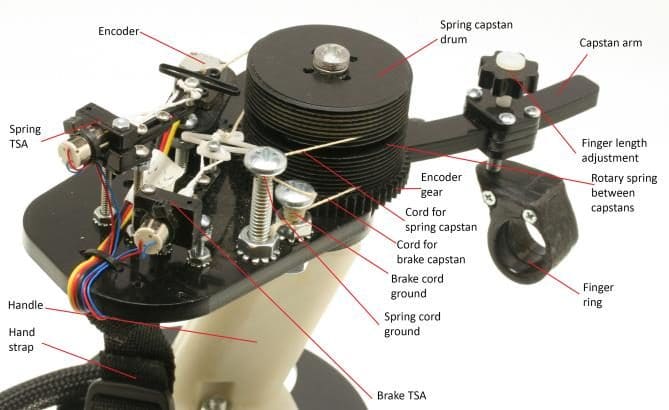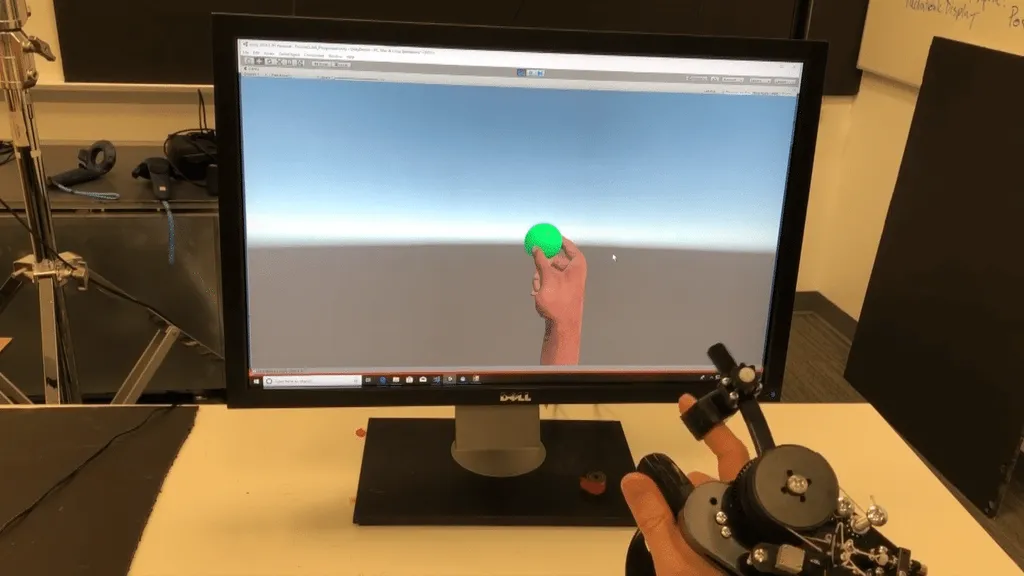Microsoft Research showed off a prototype VR controller which provides force feedback for grasping small objects with the thumb and index finger.
The researchers claim that most approaches to resistance in VR hardware are bulky, costly, and require significant power to reach human-scale forces. This is because they use large powerful actuators.
CapstanCrunch’s solution to this problem is to use a “capstan brake and clutched spring”. This is a kind of mechanism which allows the force of the relatively small motor to be amplified 40 times such that it can sufficiently resist human applied forces. This would use significantly less energy than previous approaches.
The mechanism applies to the thumb and index finger. CapstanCrunch can simulate holding rigid objects by applying the force when the user’s finger reaches the position of the virtual object. It can also simulate softer objects such as stress balls by increasing the force as the user presses in further.
But the mechanism also allows for more advanced interactions. Two examples Microsoft gave were connecting two lego blocks or cutting a material like cardboard with scissors. These kind of interactions are simply not compelling with current VR hardware, so like many real world interactions, VR developers currently just avoid them.

Back in May, Microsoft showed off another VR controller prototype, TORC. TORC is also used for grabbing small objects, however its focus is on simulating their textures and edges rather than the resistance of grabbing them. We’d be interested to see if these two prototypes could be integrated to provide both at the same time.
It’s important to note that like TORC, CapstanCrunch is just a feature prototype. That means it incorporates one feature that a next generation VR controller might have, but lacks other essential functionality such as tracking, thumbsticks, buttons, or any handling of the other three fingers.
So it’s unlikely that CapstanCrunch will directly become a product. It’s just one piece in a much larger puzzle. But Microsoft could incorporate the concept into a future controller for Xbox ‘Scarlett’ or a second generation of Windows MR. We’ll be keeping a close eye on Redmond for any signs of next generation VR hardware.


























